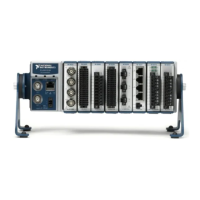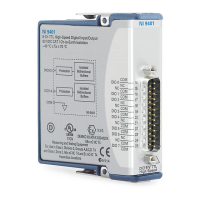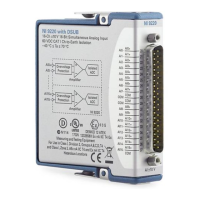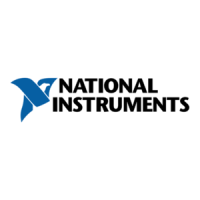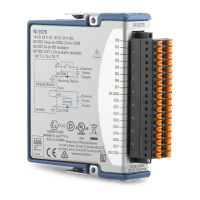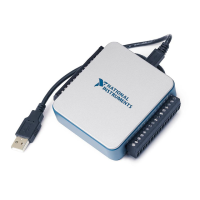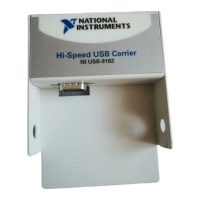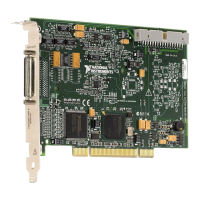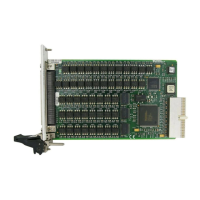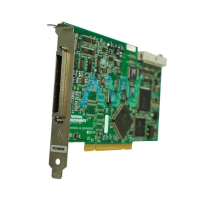© National Instruments 9-1 X Series User Manual
9
Digital Routing and Clock
Generation
The digital routing circuitry has the following main functions:
• Manages the flow of data between the bus interface and the
acquisition/generation sub-systems (analog input, analog output,
digital I/O, and the counters). The digital routing circuitry uses FIFOs
(if present) in each sub-system to ensure efficient data movement.
•Routes timing and control signals. The acquisition/generation
sub-systems use these signals to manage acquisitions and generations.
These signals can come from the following sources:
–Your X Series device
– Other devices in your system through RTSI
–User input through the PFI terminals
–User input through the PXI_STAR terminal
•Routes and generates the main clock signals for the X Series device.
Clock Routing
Figure 9-1 shows the clock routing circuitry of an X Series device.
Figure 9-1. X Series Clock Routing Circuitry
RTSI <0..7>
Onboard
100 MHz
Oscillator
External
Reference
Clock
(To RTSI <0..7>
Output Selectors)
10 MHz RefClk
PLL
÷ 5
÷ 200
÷ 10
PXIe_CLK100
PXI_STA R
100 MHz
Timebase
100 kHz
Timebase
20 MHz
Timebase
PFI
PXIe-DSTAR<A, B>
Artisan Technology Group - Quality Instrumentation ... Guaranteed | (888) 88-SOURCE | www.artisantg.com
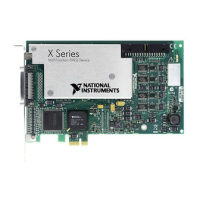
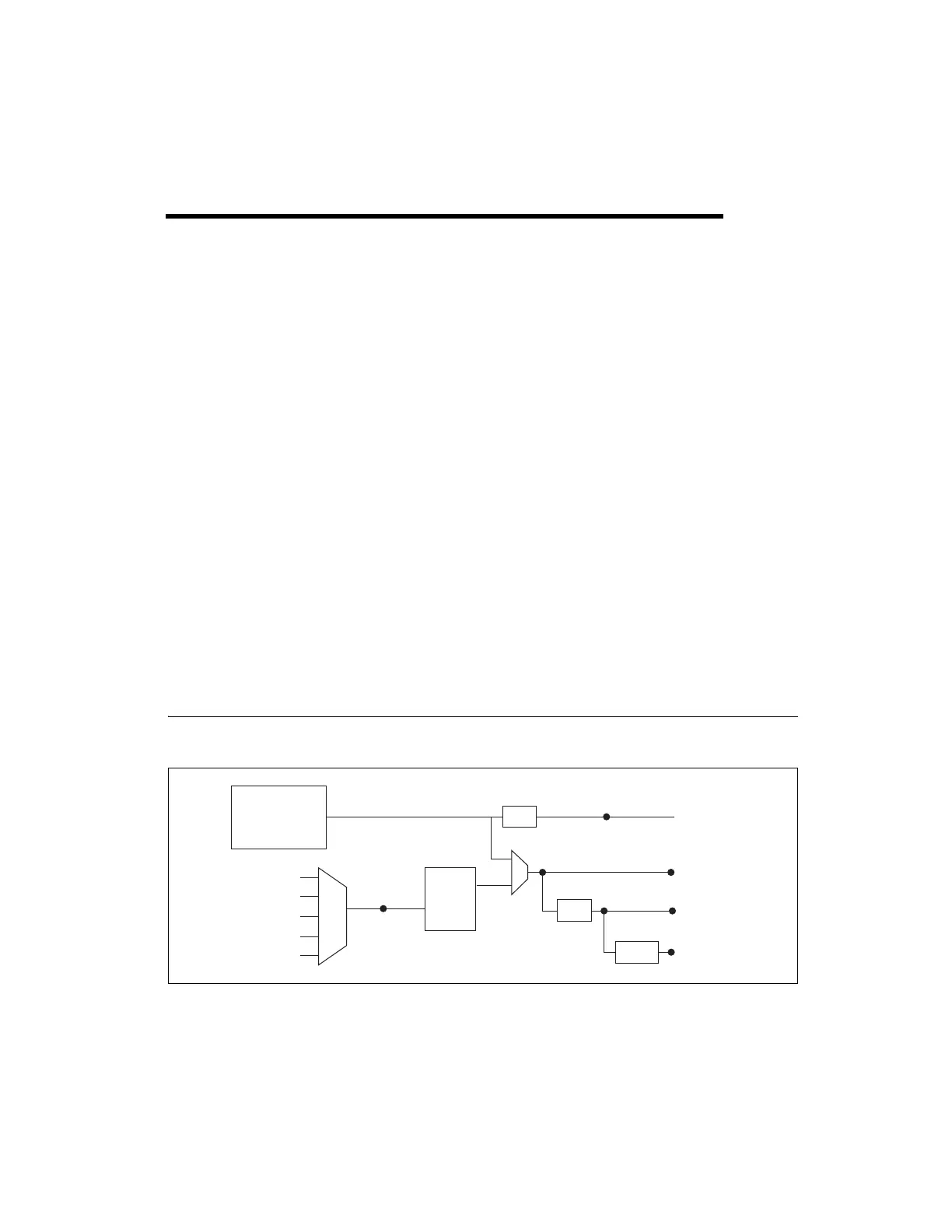